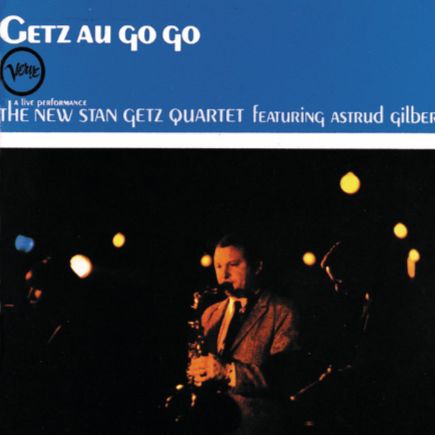It Might As Well Be Spring: un standard entre lumière et mélancolie
Composée en 1945 par Richard Rodgers, avec des paroles d’Oscar Hammerstein II, It Might As Well Be Spring fut écrite pour le film State Fair, et valut à ses auteurs l’Oscar de la meilleure chanson originale.
Anecdotiquement, le contraste entre le titre et le contexte du film a souvent été souligné: évoquer le printemps dans une histoire qui se déroule en automne, au cœur d’une foire agricole, pouvait sembler paradoxal. Mais la subtilité du texte contourne habilement cet écueil, en suggérant que ‘cela pourrait tout aussi bien être le printemps’ – une métaphore délicate pour exprimer le trouble amoureux d’une jeune femme en quête de renouveau.
Sur le plan musical, la chanson séduit par sa structure harmonique élégante et fluide, qui oscille entre tension et relâchement. L’harmonie subtile et le lyrisme de la mélodie en font un terrain d’exploration privilégié pour les improvisateurs. Entre espoir suspendu et douce mélancolie, It Might As Well Be Spring offre une richesse expressive qui inspire des lectures très diverses, tant sur le plan rythmique que stylistique.
Une rêverie bossa nova au cœur de Greenwich Village
Le 22 mai 1964, au mythique Café Au Go Go de Greenwich Village, Stan Getz enregistre It Might as Well Be Spring, qui figurera sur l’album Getz au Go Go. Entouré d’un quintet aux sonorités chaudes et nuancées – Kenny Burrell à la guitare, Gene Cherico à la contrebasse, Gary Burton au vibraphone, Helcio Milito à la batterie – Getz offre ici une lecture délicate du standard, magnifiée par la voix douce et aérienne d’Astrud Gilberto.
Ce concert new-yorkais marque un prolongement naturel de l’aventure brésilienne de Stan Getz, dans un format live qui conserve toute la fraîcheur et la spontanéité du moment. Cependant, l’album n’est en fait pas un réel album live, car il est le produit de de deux concerts de 1964 (Café Au Go Go et Carnegie Hall), avec un mixage en studio et des applaudissements surajoutés.
La version proposée ici s’éloigne de l’énergie parfois plus vive du hard bop ou du swing pour s’installer dans un climat onirique et suspendu. Astrud Gilberto, avec son chant presque murmurant, crée un espace d’intimité, tandis que Getz répond avec un phrasé souple, enveloppant, d’une grande délicatesse. L’absence de piano renforce la transparence de l’ensemble: le vibraphone de Gary Burton apporte des touches cristallines, la guitare de Kenny Burrell enveloppe de chaleur, et la rythmique subtile de Milito installe un balancement discret, typique de la bossa nova.
It Might As Well Be Spring: un estándar entre luz y melancolía
Compuesta en 1945 por Richard Rodgers, con letra de Oscar Hammerstein II, It Might As Well Be Spring fue escrita para la película State Fair y le valió a sus autores el Óscar a la mejor canción original.
De forma anecdótica, se ha destacado con frecuencia el contraste entre el título de la canción y el contexto de la película: hablar de la primavera en una historia ambientada en otoño, en el marco de una feria agrícola, puede parecer paradójico. Sin embargo, la sutileza del texto sortea con elegancia esta contradicción al sugerir que “bien podría ser primavera”, una metáfora delicada para expresar el desconcierto amoroso de una joven en busca de renovación.
Musicalmente, la canción conquista por su estructura armónica elegante y fluida, que oscila entre la tensión y la resolución. La armonía sutil y el lirismo melódico la convierten en un terreno fértil para la improvisación. Entre la esperanza contenida y una melancolía suave, It Might As Well Be Spring ofrece una riqueza expresiva que invita a múltiples interpretaciones, tanto rítmicas como estilísticas.
Un ensueño de bossa nova en el corazón de Greenwich Village
El 22 de mayo de 1964, en el mítico Café Au Go Go de Greenwich Village, Stan Getz graba It Might as Well Be Spring, que aparecerá en el álbum Getz au Go Go. Acompañado por un quinteto de sonoridades cálidas y matizadas —Kenny Burrell en la guitarra, Gene Cherico en el contrabajo, Gary Burton en el vibráfono y Helcio Milito en la batería— Getz ofrece aquí una interpretación delicada del estándar, realzada por la voz suave y aérea de Astrud Gilberto.
Este concierto neoyorquino prolonga naturalmente la aventura brasileña de Stan Getz, en un formato en vivo que conserva toda la frescura y espontaneidad del momento. Sin embargo, el álbum no es en realidad un directo auténtico, ya que se compone de grabaciones realizadas en dos conciertos de 1964 (Café Au Go Go y Carnegie Hall), con mezclas en estudio y aplausos añadidos posteriormente.
La versión aquí propuesta se aleja de la energía más intensa del hard bop o del swing para instalarse en un clima onírico y suspendido. Astrud Gilberto, con un canto casi susurrado, crea un espacio íntimo, mientras Getz responde con un fraseo envolvente y fluido, de gran delicadeza. La ausencia de piano refuerza la transparencia del conjunto: el vibráfono de Gary Burton aporta toques cristalinos, la guitarra de Kenny Burrell envuelve con calidez, y la sutil rítmica de Milito establece un balanceo discreto, típico de la bossa nova.
It Might As Well Be Spring: uno standard tra luce e malinconia
Composta nel 1945 da Richard Rodgers, con testi di Oscar Hammerstein II, It Might As Well Be Spring fu scritta per il film State Fair e valse ai suoi autori l’Oscar per la miglior canzone originale.
Curiosamente, è stato spesso notato il contrasto tra il titolo del brano e il contesto del film: evocare la primavera in una storia ambientata in autunno, nel cuore di una fiera agricola, poteva sembrare contraddittorio. Ma la finezza del testo supera abilmente questa incongruenza, suggerendo che “potrebbe anche essere primavera” – una metafora delicata del turbamento amoroso di una giovane donna in cerca di rinnovamento.
Sul piano musicale, il brano affascina per la sua struttura armonica elegante e fluida, che alterna tensione e distensione. L’armonia raffinata e il lirismo della melodia offrono un terreno privilegiato per l’improvvisazione. Tra speranza sospesa e dolce malinconia, It Might As Well Be Spring dispiega una ricchezza espressiva che continua a ispirare interpretazioni diversificate, tanto sul piano ritmico quanto stilistico.
Un sogno in bossa nova nel cuore di Greenwich Village
Il 22 maggio 1964, nel mitico Café Au Go Go di Greenwich Village, Stan Getz registra It Might as Well Be Spring, poi pubblicata nell’album Getz au Go Go. Affiancato da un quintetto dalle sonorità calde e sfumate —Kenny Burrell alla chitarra, Gene Cherico al contrabbasso, Gary Burton al vibrafono e Helcio Milito alla batteria— Getz offre un’interpretazione raffinata dello standard, sublimata dalla voce dolce e aerea di Astrud Gilberto.
Questo concerto newyorkese rappresenta un naturale proseguimento dell’avventura brasiliana di Stan Getz, in un contesto dal vivo che conserva tutta la freschezza e la spontaneità dell’istante. Tuttavia, l’album non è propriamente un live autentico: è il risultato di due concerti del 1964 (Café Au Go Go e Carnegie Hall), con missaggio in studio e applausi aggiunti in post-produzione.
La versione qui presentata si distacca dall’energia talvolta più vigorosa dell’hard bop o dello swing, per immergersi in un’atmosfera sospesa e sognante. Astrud Gilberto, con un canto quasi sussurrato, crea un’aura di intimità, mentre Getz risponde con un fraseggio fluido, avvolgente e di grande finezza. L’assenza del pianoforte accentua la trasparenza dell’ensemble: il vibrafono di Gary Burton aggiunge tocchi cristallini, la chitarra di Kenny Burrell dona calore, e la ritmica discreta di Milito crea quel tipico ondeggiamento della bossa nova.
It Might As Well Be Spring: a standard between light and melancholy
Composed in 1945 by Richard Rodgers, with lyrics by Oscar Hammerstein II, It Might As Well Be Spring was written for the film State Fair and earned its authors the Academy Award for Best Original Song.
Interestingly, the contrast between the title and the film’s setting has often been noted: singing about spring in a story that takes place in the fall, during a rural fair, might seem paradoxical. Yet the lyrics gracefully resolve this tension by suggesting that “it might as well be spring”—a delicate metaphor for the romantic restlessness of a young woman longing for renewal.
Musically, the song captivates with its elegant and flowing harmonic structure, shifting gently between tension and release. Its subtle harmonies and lyrical melody offer fertile ground for improvisers. Suspended between hopeful anticipation and gentle melancholy, It Might As Well Be Spring possesses a depth of expression that continues to inspire a wide range of rhythmic and stylistic interpretations.
A bossa nova reverie in the heart of Greenwich Village
On May 22, 1964, at the legendary Café Au Go Go in Greenwich Village, Stan Getz recorded It Might as Well Be Spring, later released on the album Getz au Go Go. Joined by a quintet with warm, nuanced textures—Kenny Burrell on guitar, Gene Cherico on bass, Gary Burton on vibraphone, and Helcio Milito on drums—Getz delivers a refined take on the standard, elevated by Astrud Gilberto’s soft, airy vocals.
This New York concert naturally extends Getz’s Brazilian journey, in a live format that retains the moment’s freshness and spontaneity. However, the album is not a true live recording; it combines performances from two 1964 concerts (Café Au Go Go and Carnegie Hall), with studio mixing and added applause.
This version moves away from the driving energy of hard bop or swing and settles into a suspended, dreamlike atmosphere. Astrud Gilberto’s near-whispered singing creates a space of intimacy, while Getz responds with fluid, enveloping phrasing marked by delicate nuance. The absence of piano enhances the ensemble’s transparency: Gary Burton’s vibraphone adds crystalline touches, Kenny Burrell’s guitar brings warmth, and Milito’s subtle rhythm provides the understated sway so characteristic of bossa nova.


